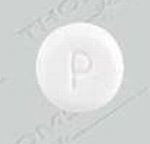Zenchent Interactions
There are 501 drugs known to interact with Zenchent (ethinyl estradiol/norethindrone), along with 22 disease interactions, and 9 alcohol/food interactions. Of the total drug interactions, 77 are major, 374 are moderate, and 50 are minor.
- View all 501 medications that may interact with Zenchent
- View Zenchent alcohol/food interactions (9)
- View Zenchent disease interactions (22)
Most frequently checked interactions
View interaction reports for Zenchent (ethinyl estradiol / norethindrone) and the medicines listed below.
- acetaminophen / oxycodone
- Adderall (amphetamine / dextroamphetamine)
- albuterol
- alprazolam
- Ambien (zolpidem)
- amitriptyline
- amoxicillin
- betamethasone / clotrimazole topical
- Botox (onabotulinumtoxinA)
- buspirone
- cannabis
- cephalexin
- citalopram
- clobetasol topical
- clonazepam
- Fish Oil (omega-3 polyunsaturated fatty acids)
- fluconazole
- fludrocortisone
- gabapentin
- lisinopril
- omeprazole
- ondansetron
- Phenergan (promethazine)
- prednisone
- rizatriptan
- tizanidine
- topiramate
- Vitamin D3 (cholecalciferol)
- Xanax (alprazolam)
- Zofran (ondansetron)
Zenchent alcohol/food interactions
There are 9 alcohol/food interactions with Zenchent (ethinyl estradiol / norethindrone).
Zenchent disease interactions
There are 22 disease interactions with Zenchent (ethinyl estradiol / norethindrone) which include:
- smoking
- abnormal genital bleeding
- abnormal vaginal bleeding
- carcinomas (estrogenic)
- hypercalcemia in breast cancer
- hypertension
- thromboembolism/cardiovascular
- hepatic neoplasms
- breast malignancy
- liver disease
- thromboembolism
- angioedema
- gallbladder disease
- hyperlipidemia
- liver disease
- melasma
- depression
- fluid retention
- glucose intolerance
- thyroid function tests
- hyperlipidemia
- weight gain
More about Zenchent (ethinyl estradiol / norethindrone)
- Zenchent consumer information
- Compare alternatives
- Reviews (2)
- Drug images
- Side effects
- Dosage information
- During pregnancy
- Drug class: contraceptives
Related treatment guides
Drug Interaction Classification
| Highly clinically significant. Avoid combinations; the risk of the interaction outweighs the benefit. | |
| Moderately clinically significant. Usually avoid combinations; use it only under special circumstances. | |
| Minimally clinically significant. Minimize risk; assess risk and consider an alternative drug, take steps to circumvent the interaction risk and/or institute a monitoring plan. | |
| No interaction information available. |
See also:
Further information
Always consult your healthcare provider to ensure the information displayed on this page applies to your personal circumstances.


